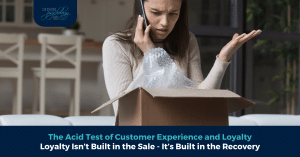Qualitative, unstructured feedback reveals the full impact of the customer’s experience and how it will influence her future decision-making, loyalty and advocacy. Yet companies often view a contentious incident very differently, which leads us to that infamous question: is the customer always right?
Is The Customer Always Right?
Ian Golding recently delved insightfully into this dilemma in his article “Customer V Owner: Who wins?” I do not believe that there is a clear-cut answer. What I do know is that the moment customers’ emotions are triggered, they become very vocal and share it freely. The trick is to pinpoint which emotions were activated and how to work around this volatile emotional state.
For instance, a customer may not realize or be able to articulate that his “shame”-trigger was triggered, resulting in more emotive feedback. His reaction would be very different had it been another trigger.
Carl Jung’s studies of the subconscious tell us that everyone has a shadow or a dark side. Its characteristics are contradictory to the “known” personality, and the subconscious keeps suppressing it. When it is exposed, people respond more vehemently to keep it “under cover”. Customers themselves are often unaware of why they react as vigorously as they do.
After 9 years of measuring customer experience, we truly understand emotions’ cardinal role in this field. I am reminded of Daniel Kahneman’s research on the remembering and experiencing self. In short, the experiencing self lives through the event, while the remembering self records or relates it afterwards. We also consult the remembering self when planning the future. We therefore make choices based on the remembering self‘s construction of a past event.
So, when we measure customers’ “experience”, we are talking to their remembering selves, unless we use immersions or real-time self-reporting that accesses the experiencing self more directly. Traditional surveys, interviews or focus group discussions tend to focus on the remembering self. The latter methodologies have their own sets of challenges such as compromised accuracy when the customer cannot remember exact details or experience remember through the filters of the subconscious aspects of her personality. It remains critical to the study of customer experience because the remembering self only gets the information that the brain chooses to retain, therefore what is top-of-mind.
Sharing the Love
What triggers our brains to recollect positive experiences? This knowledge is essential, as highly emotional experiences spark customers into actions such as sharing. Their altruistic motives often want others to either benefit or be protected from the same situation. Happy customers become your brand advocates, while “passive” customers can become detractors.
So, the higher the emotional content of the experience (what Kahneman refers to as “peaks”), the more likely that the remembering self will isolate these elements of the experience and feel compelled to share.
Making it Stick
How do we then identify emotional triggers that get “stuck” in the remembering self? In our experience these triggers do not lie on the surface. If we ask a customer if she is likely to recommend the brand, we mostly get a positive nod. But when you ask her exactly what she would say, the actual experience first has to be processed to formulate a reason.
We have used this approach with clients in the automotive industry, and found divergent explanations ranging from the rational to the emotional. In a case study over 6 months, we unpacked and grouped the primary reasons shared for recommendation. It included loyalty to the brand, the proximity and convenience to reach the dealer, how they were left feeling when interacting with the dealer, specific people, the efficiency of the process, and service levels.
The table below clear shows that reasons for not recommending are driven mostly by service and process, and not by emotions.

This is a compelling reason to not track NPS in isolation, but to explore what drives the recommendation, and therefore loyalty or “emotional stickiness”.
Companies can create brand advocates by tracking the increase of emotional primary reasons. If a greater portion of customers feel compelled to share their story because they were moved on a personal level, the greater the likelihood they will then share their stories and influence others. This is the key to forge true loyalty to a brand, instead of the illusion of loyalty.
The Consumer Psychology Lab is a customer experience consultancy with extensive know-how of measuring emotion. Our highly skilled psychologists interview customers about their experience and provide our clients with deep insights into consumers’ experience and behaviour. We are also passionate about equipping companies with the most suitable CX tools and skills.






